Contents
- Migraine Triggers: Get to Know Your Enemy
- How to get rid of a headache?
- Simple pain medications
- Special anti-migraine analgesics
- How to deal with nausea during a migraine attack?
- How to choose the right drug for migraine?
- How to take painkillers for migraine?
- Painkillers: help or harm?
- How to reduce the frequency of migraine attacks?
- The attack begins: what to do?
- When to call an ambulance?

Migraine is a hereditary disease in which the vessels of the brain are characterized by increased sensitivity and become inflamed under the influence of adverse external and / or internal factors. Migraine attacks are accompanied by severe pain, photophobia, and nausea. There are no permanent degenerative changes in the brain, expansion and inflammation of blood vessels occurs only during an attack, and then stops.
Migraine does not pose a health hazard, moreover, people suffering from it retain mental clarity and good memory longer. But during painful attacks, you don’t want to think about the positive aspects of the disease. How to understand if you really have a migraine, or headaches are of a different nature?
Here’s what you need to know about migraines:
Seizures usually have four stages: prodrome, aura, immediate pain, and post-dormancy;
The prodrome is anxiety and anticipation of an attack, the aura is visual, tactile, olfactory and speech disturbances before an attack, migraine pain is always very strong, pulsating and localized in a certain part of the head, and the postdormal period is a feeling of weakness after an attack;
Sometimes there is a migraine without an aura, but its absence does not remove the diagnosis;
Severe migraine attacks can be accompanied by vomiting, dizziness, double vision and blackouts, and even paralysis of the limbs. Recurring abdominal pain and vomiting of unknown etiology in children can also be a manifestation of migraine.
In girls, migraine first manifests itself at the age of 13-23 years, often its onset is associated with the first birth. Young men suffer from this disease much less often, but they begin to suffer earlier – from 8-10 years old, and it is difficult to predict when the attacks will end. Migraine is diagnosed in only 6% of the entire male population. Among women, one in five suffers, but almost all migraine recedes after menopause.
It is impossible to completely cure migraine, as well as to explain its causes or prevent its development. But the disease can and should be brought under control. Ideally, you should not have more than two attacks per month, and they should not last more than two hours. For those who are used to writhing in pain and running to the toilet for two or three days, such words seem like an unattainable dream. But do not rush to despair. We will try to teach you to live in such a way that it is not migraine that controls you, but you control it.
To get your migraine under control, you need to:
Calculate provoking factors and carefully avoid them;
Understand the variety of painkillers, choose the right medicine and take it correctly in order to quickly relieve pain;
Do everything possible to reduce the frequency of seizures.
We will now examine each of these three points in detail.
Migraine Triggers: Get to Know Your Enemy
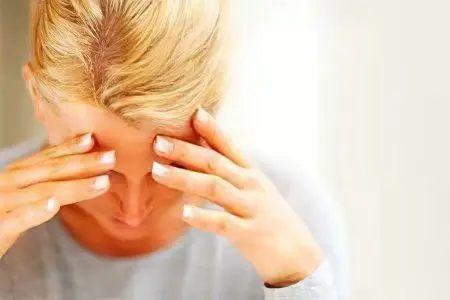
A migraine is not a headache as such, but only an increased sensitivity of the brain. For pain to begin, provoking factors are needed, which are called migraine triggers. A person may have one or more of these triggers, and sometimes seizures occur only from a certain combination of them.
What does this mean: if there is no reason, then there will be no seizures? That’s right, but it’s hard to completely protect yourself from triggers – they are literally everywhere. Someone is more fortunate – their migraine overcomes only against the background of stress, and someone suffers from any difference in atmospheric pressure.
Do not rush to draw conclusions, try to keep a “migraine diary” for one month. Draw a table, mark the dates at the top, and write all possible triggers on the side. If there was an attack, put the pluses in the column opposite those provoking factors that took place on that particular day. For example: they drank – plus, did not get enough sleep – plus, it was raining – plus, quarreled with someone – plus, and so on. This mini-study will reveal which triggers (or combinations of triggers) trigger your migraines.
And to help you spot your enemies, here is a list of all possible internal and external migraine triggers:
Alcohol. First of all, you should be wary of red wine and champagne. Any alcohol dilates blood vessels and provokes a migraine, but red wine also contains flavonoids, and champagne contains carbon dioxide bubbles, so the vasodilating effect of these strong drinks is the most pronounced;
Food. Here, in the first place are products containing tyramine – smoked meats, blue cheese, beer. Somewhat less often, citrus fruits, bananas and chocolate act as triggers. Recently, evidence has emerged that migraine attacks can provoke the ubiquitous monosodium glutamate, a food additive that enhances the taste of most prepared foods. As for caffeine, its role in triggering the migraine mechanism is ambiguous. On the one hand, coffee and strong tea constrict blood vessels, and on the other hand, regular use of caffeine causes addiction. And a sharp rejection of it entails undesirable changes in vascular tone and, as a result, a migraine attack;
Diet. In fact, it is not so much what you eat that matters, but how regularly you do it. A long break between meals provokes a critical drop in blood glucose levels. And who is the most gluttonous in our body? Of course, the brain. And if he is prone to migraines, he will not fail to avenge you for the hunger strike with an attack of excruciating pain. Just remember to snack every 3-4 hours;
Allergy. Individual intolerance to food, drugs or external factors (dust, pollen) is directly related to the frequency of migraine attacks. This fact was confirmed by a medical study, during which a group of patients was isolated from all allergens for three months. Absolutely in all subjects, the frequency of seizures decreased, and the pain became less intense and prolonged;
Liquid. Any person, and especially a migraine sufferer, needs to drink 1,5 liters of pure water per day. This will allow biochemical reactions in the body to proceed correctly, and the waste products of these reactions will not accumulate in tissues and blood vessels. If you are involved in sports or heavy physical labor, take into account the increasing need of your body for clean water. Not in tea, coffee or juice, but in plain water;
Medications. Drugs that have a vasodilating effect (for example, Nitroglycerin, Curantyl, etc.) will almost certainly trigger the migraine mechanism and cause an attack, so carefully read the annotations to all drugs before taking them;
Dream. An adult needs to sleep from 6 to 8 hours a day, no less. Suppose you change jobs, and instead of the usual 8 hours, now sleep only 5. Adapting to such a schedule will necessarily be accompanied by migraine attacks. The same thing can happen with a person who went on vacation and decided to sleep until noon – it is very likely that your sybaritism will turn into a terrible headache;
Emotional stress. It is difficult to imagine everyday life without stress, but you can learn how to properly relax and restore peace of mind. This is especially important for people with migraines. During the stress itself, when the body is concentrated, there will be no attack – it will overtake you a few hours later, or the next day. Therefore, after a nervous shock or conflict, make every effort to drive away the negative and free yourself from tension;
Sports and active recreation. A whole day in the garden, the first fitness workout, long shopping – and now you have already collapsed with a migraine attack. A familiar picture, isn’t it? If you move a little in life, do not rush to load yourself, but if, on the contrary, you regularly play sports, continue in the same spirit and never drastically slow down;
Weather. Changes in atmospheric pressure are not the most popular migraine triggers – these factors only affect people with unstable blood pressure. However, one does not interfere with the other, and it is likely that you are a hypertensive migraine sufferer;
Окружающая среда. Other external factors can also provoke an attack: a long loud sound (a construction site, a production workshop, a rock concert, a football match), a strong smell (perfume, paint, varnish, solvent), dirty air (smoky or dusty room);
Hormones. Here is the answer to the question why migraine so “loves” the fair sex. During the life in the body of every woman, under the influence of sex hormones, serious changes occur: the girl matures, menstruates, becomes pregnant, gives birth, feeds, loses fertility. And at every stage, hormones work. It is no wonder that almost all women suffering from migraine have severe attacks on the eve of menstruation, in the postpartum period and during menopause.
How to get rid of a headache?
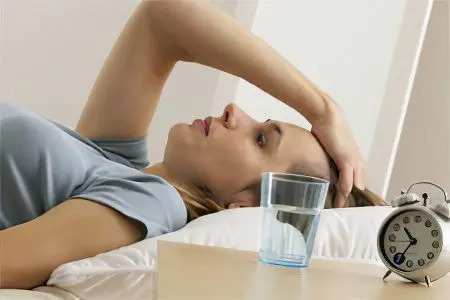
Well, finally got to the most important thing, you say and list in your mind all the questions that brought you to this page:
Do I need to take painkillers to treat migraine?
How often can this be done?
And how to get rid of nausea?
Are headache pills bad?
How do they differ from each other, except for the price?
When to take medicine: during the aura, after the onset of pain, or when it is no longer tolerable?
Or maybe take a pill just in case, at the first premonition of an attack?
Let’s deal with everything in order. Let’s start with a complete list of all drugs for migraine and headaches, indicating their true composition. Perhaps it will be a big surprise for you that for the same substance you can be charged at a pharmacy an amount that differs by 10 or more times. It is equally important to learn to distinguish the pills that are suitable for the treatment of migraine from those that are completely unsuitable, as well as to assess the severity of possible side effects.
Simple pain medications
Official medicine calls such drugs a short abbreviation of NSAIDs – non-steroidal anti-inflammatory drugs, that is, they relieve inflammation without the help of hormones. Below we provide a detailed list of these drugs, and even if you do not find the name of your pills in it, read their composition – for sure, there are completely familiar terms.
Absolutely all NSAIDs relieve headaches by stopping inflammation in the vascular walls. In other words, these drugs eliminate the very cause of the pain, which is very good. However, some tablets have additional components that have a calming or antispasmodic effect. How relevant this is in the treatment of migraine, we will discuss in detail.
And to begin with, we will divide all headache drugs into two large groups:
One-component;
Multicomponent.
Single-component analgesics
Simple single-component analgesics include acetylsalicylic acid, ibuprofen, acetaminophen, naproxen, ketorolac, xefocam, lornoxicam, and diclofenac.
To date, the following drugs are registered in Russia:
Acetylsalicylic acid (Aspirin, Upsarin). For the treatment of migraine, a dosage of 500 mg or more is relevant, the best option is to drink two 500 mg tablets at once. Effervescent tablets are much better because they are absorbed faster, which is very important in conditions of nausea. In pharmacies you can find the so-called cardiac aspirin (Trombo ACC, Aspirin cardio), which is prescribed for prophylactic purposes to patients with a threat of stroke and heart attack, because acetylsalicylic acid reduces blood clotting. Be careful: such aspirin is absolutely not suitable for the treatment of migraine, it contains too little dosage;
Acetaminophen (Paracetamol). We used to think of paracetamol as a cure for high fever in children. By itself, it is safe, but not very effective, so multicomponent analgesics with the addition of paracetamol are more suitable for the treatment of migraine. Pure acetaminophen is also sold under the names Panadol, Tylenol, Efferalgan;
Ibuprofen (Nurofen 200 mg; Nurofen forte 400 mg; Mig 200; Mig 400; Brufen; Advil). It has analgesic, antipyretic and anti-inflammatory effects. Well tolerated by patients, quickly relieves headaches. For migraine, it is prescribed in a dosage of 500 mg;
Metamizole sodium (Analgin 500 mg; Baralgin 500 mg). We did not start the list with this most popular analgesic because it has been heavily discredited over the past few decades. Regular intake of metamizole sodium negatively affects the composition of the blood, the functions of the liver and kidneys. In the entire civilized world, a pure substance in a dosage of 500 mg has not been released for a long time, but only 100-250 mg are added to the composition of multicomponent painkillers. In Russia, a penny Analgin with a horse dose of metamizole is still being produced, which relieves migraine headaches well, but causes irreparable harm to health with regular use;
Naproxen (Naproxen 250 mg Nalgesine 275 mg Nalgezin forte 550 mg). For the treatment of migraine, it is used both independently at a dosage of 500-750 mg, and as part of combined preparations for headaches. It is also often used to combat period pain in women;
Diclofenac (Voltaren) is an anti-inflammatory substance that is successfully used for pain in the back and joints. There are many trade names for diclofenac, and Voltaren is perhaps the most famous of them. To relieve acute headaches and treat migraines, diclofenac tablets or Voltaren powder are used;
Ketorolac (Ketanov, 10 mg);
Lornoxicam (Ksefokam, Xefokam Rapid).Ketanov and Ksefokam are the most powerful analgesics, with which you can eliminate even throbbing toothache or cramps from hepatic colic. Both drugs are actively used in the treatment of migraine, and not only in tablets, but also in injectable form.
Multicomponent analgesics
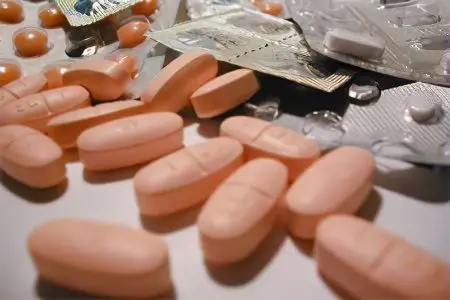
These pain medications may contain one or more main active ingredients (for example, metamizole sodium and paracetamol), as well as one or two additional substances (for example, codeine, caffeine, or phenobarbital).
Caffeine is known to have a vasoconstrictive effect, which is very important for migraines. Codeine and phenobarbital calm the nervous system and reduce the excitability of the cerebral cortex. Previously, phenobarbital was used in high doses to treat epilepsy, and this practice allowed to expose its serious side effects and register an addictive effect. Keep in mind that codeine and phenobarbital are addictive, which means that pills with such additives are not suitable for regular migraine treatment.
We list the most popular combination drugs for headaches:
Citramon (paracetamol 180 mg + caffeine 30 mg + acetylsalicylic acid 240 mg). It has the same composition Ascophen. These drugs are suitable for the treatment of migraine in patients who do not have problems with high blood pressure and vasospasm. To stop an attack, you need to drink at least 2 tablets at once;
Migrainol, Panadol extra (paracetamol 500 mg + caffeine 65 mg). Here is a vivid example of pulling money from ignorant people suffering from a wild headache. They come to the pharmacy, where they are helpfully offered a special medicine for migraine, which is called Migrenol, and, of course, costs several hundred. In fact, that Migrenol, that Panadol extra is a ten-ruble paper blister of Paracetamol and a cup of coffee. And for migraine, these drugs help worse than Citramon (also, by the way, ten rubles);
Pentalgin. Under this brand, 4 drugs are sold, slightly different in composition and purpose. The first three are suitable for relieving pain during rare (not more than 2 times a month) migraine attacks, and the fourth has an antispasmodic effect and is designed to eliminate colic, cramps, dental, muscle, joint and menstrual pain:
Pentalgin N (metamisole sodium 300 mg + naproxen 100 mg + caffeine 50 mg + codeine 8 mg + phenobarbital 10 mg);
Pentalgin ICN (metamisole sodium 300 mg + paracetamol 300 mg + caffeine 50 mg + codeine 8 mg + phenobarbital 10 mg). The drugs have the same composition Sedal M и Sedalgin neo;
Pentalgin plus (propifenazone + paracetamol + caffeine + codeine + phenobarbital);
Pentalgin (paracetamol 300 mg + naproxen 100 mg + caffeine 50 mg + drotaverine 40 mg + pheniramine maleate 10 mg).
Kaffetin (propyphenazone 210 mg + paracetamol 250 mg + caffeine 50 mg + codeine 10 mg) is good because it does not contain analgin, but is not suitable for permanent treatment of migraine due to codeine;
Tempalgin (metamisole sodium 500 mg + triacetonamine 4 toluenesulfonate 20 mg). These are the familiar “green pills for the head.” Indeed, they relieve pain well, thanks to a large dose of analgin and a non-narcotic sedative additive;
Spazmalgon (Spazgan,took, metamizole sodium 500 mg + pitophenone 2 mg + fenpiverinium bromide 20 mg). It is a big mistake to use this drug for the treatment of migraine on an ongoing basis. It has a completely different purpose. Of course, 500 mg of analgin will dull any pain, but we have already talked about its dangers. And the remaining components of Spasmalgon have an antispasmodic effect, which is not relevant for migraines, since the vessels in the brain are dilated and inflamed, and not compressed. Let’s debunk the myth: Drotaverine (But-snap) is also useless for migraines. It has an exclusively antispasmodic, not anti-inflammatory effect, and there are no spasms during a migraine attack;
Andipal (metamisole sodium 250 mg + dibazol 20 mg + papaverine 20 mg + phenobarbital 20 mg). A very effective drug for relieving headaches in people suffering from migraine on the background of hypertension and increased nervous excitability. However, due to the fact that one tablet of Andipal contains only half a tablet of analgin, for the treatment of migraine you have to drink two tablets at once, and this is 40 mg of phenobarbital. As a result, addiction is inevitable.
Let’s now discuss the “fire”, injection methods for relieving a terrible headache during a migraine attack. They have to be resorted to when a person took absolutely inappropriate pills that did not help him, and lost precious time, or when he courageously endured pain until he started climbing the wall. Of course, this is not possible, but if the situation nevertheless arose, will have to make an injection.
For intramuscular injections at home, the following analgesics are most often used:
Baralgin – 2500 mg of analgin in 1 ampoule. The equivalent of five tablets of analgin immediately enters the bloodstream. At the stage when the headache is unbearable and accompanied by nausea, this is the best way out;
Ketorol – 30 mg of ketorolac in 1 ampoule. It helps faster and better than Baralgin, does less harm to health, but costs much more and is never at the disposal of emergency doctors. If you have a severe migraine, it is better to buy Ketorol in a pharmacy yourself, along with suitable syringes, and keep it at hand.
An effective and painless alternative to injections is rectal suppositories. Since large vessels pass through the rectum, painkillers quickly enter the bloodstream from there, bypassing the digestive tract, covered by nausea.
For the treatment of migraine, the following suppositories are used:
Voltaren 50 and 100 mg (diclofenac);
Tsefekon D (paracetamol);
Indomethacin 50 and 100 mg.
If the nausea is not very strong and is not accompanied by vomiting, it makes sense to take diclofenac in powder – Voltaren Rapid Sachet. It is very quickly absorbed in the stomach and does not irritate the mucous membrane, so it does not aggravate nausea.
At the end of the conversation about combined painkillers for the treatment of migraine, I would like to dwell in more detail on prescription drugs. You can’t buy such pills in a pharmacy just like that, because they contain unsafe substances that are addictive. For example, Zaldiar (tramadol 37,5 mg + paracetamol 325 mg). We mentioned paracetamol above, and tramadol is a semi-narcotic substance that activates endorphin receptors. In other words, after taking tramadol, a person feels as if there is a lot of the hormone of joy in his blood – endorphin. The cause of the pain is not eliminated, but the pain mechanisms in the brain are triggered. Zaldiar is used only for the treatment of severe uncontrolled forms of migraine, and only as prescribed by a doctor.
Special anti-migraine analgesics
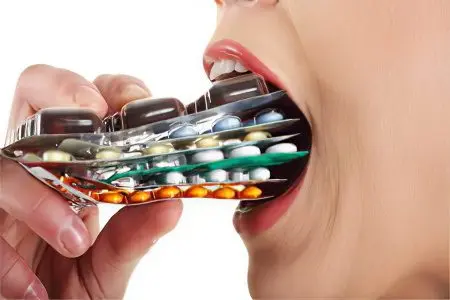
As long as migraine has existed, so many scientists have been trying to find a special medicine for the treatment of this mysterious disease. A significant percentage of patients cannot choose an anesthetic at all among the available and popular analgesics – no pills simply help them. That is why the scientific breakthrough in the treatment of migraine was only a matter of time, and has recently taken place.
In 1989, the German pharmaceutical company GlaxoSmithKline developed the first specific anti-migraine drug – sumatriptan. It constricts dilated vessels, blocks the release of calcitonin-related peptide and substance P from the endings of the trigeminal nerve, thereby completely stopping a migraine attack. To this day, sumatriptan is considered the “gold standard” in the treatment of migraine – this drug radically improves the quality of life of more than 70% of patients who have tried it on themselves.
Triptans
Sumatriptan was the first member of the anti-migraine drug family. Over the past 30 years, this family has been replenished with several more effective means. It is important to understand that triptans do not relieve any other headache than that caused by migraine. At the same time, no other type of drug has been shown to be as effective in treating migraine as triptans.
The following triptans are sold in Russian pharmacies:
Sumatriptan and its generics (drugs with the same active ingredient):
Imigran in tablets of 50 and 100 mg and as a spray of 20 mg (single dose);
Amigrenin 50 and 100 mg (Russia);
Sumamigren 50 and 100 mg (Poland);
Rapimede50 and 100 mg (Iceland);
Zolmitriptan (Zomig 2,5 mg);
Eletriptan (Relpax 40 mg);
Naratriptan (Narami 2,5 mg).
Compared to original drugs, generics are up to four times cheaper, and they have the same high efficiency. In our country, Amigrenin (a generic of Sumatriptan) enjoys well-deserved love among migraine patients, which can be purchased for an average of 150-200 rubles.
The introduction of triptans into the pharmaceutical market has been a lifesaver for millions of people suffering from excruciating migraine attacks with nausea and vomiting. But, as is often the case in life, every good thing has its drawbacks. Triptans are no exception. Since they greatly narrow the inflamed vessels, some people simply cannot take such drugs.
Although triptans have a point, selective effect on the vessels of the brain, it is impossible to completely write off their effect on the cardiac and peripheral vessels. Therefore, doctors do not prescribe triptan treatment for migraine to relatively healthy and young patients who experience stabbing pains in the heart during intense physical exertion, or a feeling of lead weight in the legs. Varicose veins and thrombophlebitis in history are also factors not in favor of triptans.
If you have a migraine with aura, it is very important to choose the right time to take your triptan. During the aura, the vessels of the brain are constricted, and the onset of pain signals their expansion and inflammation. That is why you should never take a pill at the aura stage to get ahead of the pain. So you will not get ahead of her, but only prolong the aura and intensify your torment during an attack.
It is better to start migraine treatment with Sumatriptan or Zomiga after consulting a doctor and a basic examination, including a blood test and an electrocardiogram. Of course, in the pharmacy you will be sold these drugs without a prescription, but do not rush to go there without visiting the doctor. The very fact that triptans are sold in 2 or 3 tablets in one package suggests that their overdose or misuse is fraught with serious negative consequences.
Usually triptans are well tolerated, only sometimes patients report a feeling of crawling on the skin, heaviness in the chest and difficulty concentrating. Thirty years of experience in the treatment of migraine with triptans allows us to speak with confidence about their safety and high efficiency. Therefore, if you have no contraindications, there is nothing to be afraid of – you can safely proceed to treatment.
Ergotamine derivatives
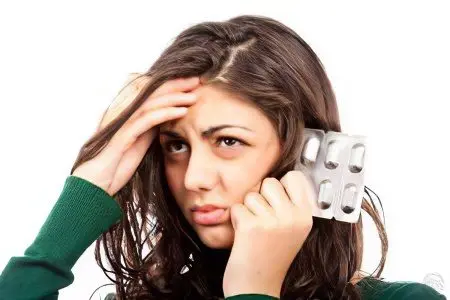
There is another, older class of special anti-migraine analgesics – ergotamine derivatives. They, unlike triptans, only constrict blood vessels, moreover, very strongly and quickly, so they can be dangerous, especially in large doses. In most foreign countries, these drugs are not prescribed for the treatment of migraine on an ongoing basis. Ergotamine derivatives are considered only as a reserve substance for the relief of severe attacks when no other methods work.
For example, detergent Dihydroergotamine in ampoules it is present in the arsenal of Western doctors in case of emergency care for a patient with migraine status (that is, suffering from a headache for several days in the absence of the effect of conventional analgesics). It is impossible to buy Dihydroergotamine in a pharmacy without a prescription, but you can buy combined painkillers with a low content of ergotamine.
Three such analgesics are registered in Russia:
Nomigraine (ergotamine tartrate 0,75 mg + caffeine 80 mg + propyphenazone 200 mg + camylofin chloride 25 mg + mecloxamine citrate 20 mg). Ergotamine constricts blood vessels, caffeine tones their walls and accelerates the absorption of tablets, propyphenazone has an analgesic effect, and mecloxamine neutralizes nausea;
Syncapton (ergotamine tartrate 1 mg + caffeine 100 mg + dimenhydrinate 25 mg);
caffetamine (ergotamine tartrate 1 mg + caffeine 100 mg).
But according to patients, two Nomigren tablets can stop a migraine attack with about the same speed and efficiency as one Zomig tablet. However, when comparing these drugs in terms of safety, triptan is preferable. And you also need to take into account that the joint intake of ergotamine derivatives and triptans is categorically contraindicated, since it leads to a critical narrowing of the cerebral vessels!
Ergotamine derivatives have a fairly wide range of contraindications:
Diseases of peripheral blood vessels;
Arterial hypertension;
Angina;
Ischemia;
Myocardial infarction;
Stroke;
Glaucoma;
Pregnancy and lactation.
How to deal with nausea during a migraine attack?
A migraine attack is almost always accompanied by nausea and sometimes repeated vomiting. Not only is it very unpleasant, but it also interferes with the timely assimilation of painkillers taken. If you took a pill and then vomited, you can assume that you did not take the medicine at all. Therefore, as soon as you feel the onset of nausea, immediately take an antiemetic (Cerucal, Raglan), you can directly together with an analgesic.
However, even at the very beginning of a migraine attack, when it is too early to talk about nausea and throbbing pain, the stomach is already functioning incorrectly, not at full strength, and the food eaten the day before lingers in it. The same fate, most likely, awaits the painkiller you have taken. It will lie there and corrode the mucous membrane, further provoking nausea. To avoid this, take a pill Motilium – This is a medicine for overeating, which contains a complex of gastric enzymes that speed up the process of digestion.
How to choose the right drug for migraine?
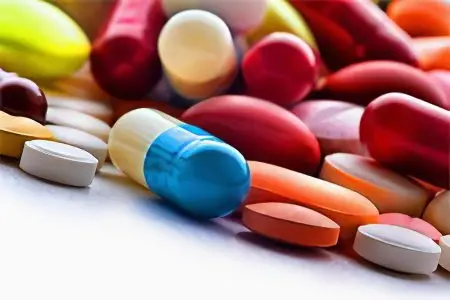
From the variety of painkillers presented above, it is not surprising to get confused: what pills to choose, and where to start migraine treatment? The most correct would be a consistent approach – start, so to speak, with the least evil, gradually moving towards the greatest, and only if simple analgesics do not help. It is important to choose an adequate dosage, otherwise you will drink 2 more tablets in an hour, two more in a few hours, in the end they will not work like that, because the moment is lost, and you will undeservedly write down the drug in “ineffective migraine remedies”.
Aspirin Of all the simple NSAIDs, it is best for relieving migraine headaches. Timely taken 1000 mg of aspirin is comparable in effectiveness to triptans, but much more affordable. However, do not forget about the corrosive effect that acetylsalicylic acid has on the stomach. Because of this disadvantage, the treatment of migraine with aspirin is contraindicated in patients with gastritis and peptic ulcer.
As we mentioned above, in Europe, a real persecution has been announced for combined analgesics due to harmful addictive additives (codeine, phenobarbital). Therefore, there, if the head hurts a lot, you have to be content with the usual aspirin.
Entrepreneurial people came up with a special “anti-migraine cocktail” consisting of simple and affordable ingredients:
A glass of water with 1000 mg of effervescent aspirin dissolved;
A cup of freshly brewed sweet black coffee or a can of cola;
Motilium tablet.
How it works? First, you take a large dose of rapidly absorbed aspirin. Secondly, you provide the body with fluid and glucose, which fills the stomach and calms the brain. Thirdly, you get a portion of gastric enzymes that will help to digest the contents of the stomach as quickly as possible and move it to the intestines, where the aspirin will be absorbed. This “cocktail” really works! Try it, and if you have an ulcer or gastritis, replace aspirin with nalgesin or naproxen at a dosage of 500–750 mg.
Triptans – your first-line drugs in the presence of a stomach or duodenal ulcer, as well as in case of exacerbation of gastritis, or if Aspirin does not have an effect after 45 minutes after taking it. In this case, start taking triptans immediately, at the very beginning of the next attacks. We remind you once again: to treat migraine with triptans, you need to get permission from a doctor!
Single-component analgesics (ibuprofen, analgin, paracetamol, diclofenac) should not be used in its pure form, especially analgin. Try to test the effect of ibuprofen (600-800 mg) or ketorolac (20 mg) on yourself, perhaps this will be enough to quickly and completely get rid of a headache during an attack. But paracetamol and diclofenac are unlikely to be as effective as aspirin in treating migraines. Although, as you know, each person is individual.
Combined analgesics (Citramon, Pentalgin) are much more often used to stop migraine attacks, and they work better, but do not forget that we talked about harmful additives and addiction. Preparations containing codeine and phenobarbital can only be used to treat non-severe migraine with 2-3 attacks per month.
The selected migraine drug can be considered effective if:
It completely relieves headache no later than 4 hours after ingestion;
During the first 2 hours, nausea and photophobia pass, and the pain passes from throbbing to dull and gradually subsides;
It helps you stop an attack always or almost always;
Headache does not return the next day;
You do not have to repeat this drug during an attack or add another one.
How to take painkillers for migraine?

No, it’s not about strictly following the instructions, not chewing pills that are not intended for this and drinking them with enough water. This goes without saying. In the treatment of migraine, perhaps the most important thing is the time of taking the medicine, and not its composition. Any analgesic, simple or combined, conventional or special, is able to stop a severe headache, no matter what causes it. However, with a migraine, you have a few minutes to give him this opportunity.
Expansion and inflammation of the cerebral vessels is the only cause of headache only during the first 40-120 minutes from the onset of the attack (depending on how fast the pain grows). Thus, if you managed to take painkillers within the first two hours, you have a chance to stop the attack. Otherwise, the chance is missed.
When nausea, fear of bright light and intolerance to loud sounds join the throbbing headache, this indicates that pain impulses have already passed through the fibers of the trigeminal nerve and reached the cerebral cortex. Pain mechanisms were activated, which are very difficult to stop with analgesics, especially given the senselessness of oral administration.
Combination analgesics are more likely to help you when the optimal time is missed, but this is only because the calming additives they contain numb the sensitivity of the cerebral cortex and fight the effect, not the cause. Since the concentration of codeine and phenobarbital in such preparations is scanty, success is not guaranteed. But uncontrolled treatment of migraine with combined analgesics will definitely lead to dependence on them. Taking drugs with the addition of phenobarbital or codeine is recommended no more than twice a month.
Painkillers not taken on time usually cause a person to suffer from a terrible headache all day, and, in the end, call an ambulance. Doctors inject him intramuscularly Baralgin, Dimedrol, sometimes even Relaniumcausing the exhausted patient to fall asleep quickly. Try to never bring yourself to such a state: firstly, it is dangerous for health, and secondly, it leads to more frequent migraine attacks in the future.
Of course, you can do nothing at all and just endure: the brain has protective anti-pain mechanisms that turn off pain when it ceases to be an alarm for you, as the owner of the body, and becomes a threat to the body itself. After a maximum of 72 hours, a huge concentration of the hormone serotonin will accumulate in the blood, and the pain syndrome will be relieved.
However, the reserves of the brain are not infinite – it cannot produce serotonin constantly in wild quantities, and a decline will inevitably follow the rise. And an underestimated level of this hormone in the blood makes a person experience severe pain for any, even the most insignificant reason. In other words, the pain threshold decreases, and in migraine conditions this is a disaster.
Painkillers: help or harm?
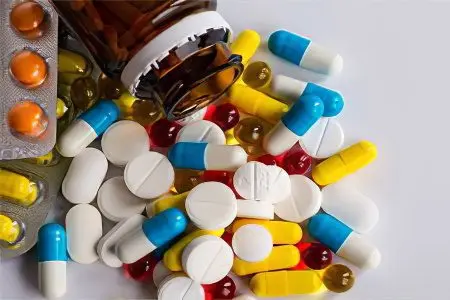
Absolutely all analgesics for relieving pain and inflammation disrupt the synthesis of the cyclooxygenase enzyme. But this enzyme is not only involved in the development of inflammation, but is also present in the mucous membrane of a healthy stomach. Cyclooxygenase deficiency leads to thinning and ulceration of the mucosa, so the abuse of NSAIDs is fraught with the development of gastritis and ulcers. These drugs also have a bad effect on the functioning of the liver and kidneys, since they are excreted from the body through one of these organs, or even through both.
The second negative point is physiological addiction. The body gets used to the fact that a little something hurts, out of nowhere a “good pill” appears and eliminates inflammation. He wants to do less and less on his own, and more and more to get such pills. As a result, if earlier you could get rid of migraines with 500 mg of aspirin, now only 1500 mg help. The number of drugs increases, therefore, the side effects increase. A vicious circle arises, getting out of which is sometimes as difficult as giving up drugs.
In medicine, there is a special term that refers to drug-induced headache – abuse (from the English “abuse” – abuse). As soon as the concentration of analgesics in the blood decreases in a person with such a problem, pain occurs, simply as a reaction to the fact that he did not drink the pill on time. He goes on about his addiction and continues to increase his pain medication until it comes to hospitalization with a diagnosis of “acute drug poisoning.
Almost all people who have long and regularly resorted to the treatment of migraine with analgesics also develop a persistent psychological dependence on pills. They are always afraid of an attack, carry a pile of boxes and blisters with them, spend a significant part of their income on medicines, take pills just like that, “to forestall pain.” Did you recognize yourself in this description? Please try to stop!
You can take painkillers no more than twice a week. During a migraine attack, this must be done on time and strictly in a therapeutic (not too low!) dose. You can not repeat the reception earlier than indicated in the instructions, drink more tablets per day than recommended, or instead drink other tablets, guided by the fact that you have not exceeded the dosage of each individual drug. They will poison you all together, and the pain will not be removed if they could not do it right away.
This is all, of course, wonderful, you say, but what to do if it hurts?! And nothing helps? And the seizures are only getting more frequent? We will try to answer these questions in the next chapter.
How to reduce the frequency of migraine attacks?
Successful resolution of this issue is as much up to you as it is to your doctor. What can you personally do to make migraine attacks rarer and less painful? At the very beginning of our conversation, we discussed triggers – external and internal factors that provoke the occurrence of seizures. It is unfortunate, but neurologists state that almost none of the patients with migraine do not keep a diary on their advice and do not try to identify their triggers. Everyone says things like “I have seizures when I’m nervous” or “I just didn’t get enough sleep” but do nothing to protect themselves from these risks!
Try to stop reasoning according to the principle “we are not like that, life is like that”. You are quite capable of organizing the right regime of work and rest, learning to relax after stress, instilling in yourself a love for light, healthy food, sports and an active lifestyle. If attacks are provoked by external factors (continuous loud noises, polluted air, allergens), simply eliminate them from your life. Well, if even the most careful attitude to yourself still does not allow you to reduce the frequency of migraine attacks, it’s time to see a doctor for serious treatment.
After the examination, you will be prescribed a course of taking special drugs aimed at reducing the sensitivity of cerebral vessels. They do not relieve the headache, but prevent its occurrence. Any person with severe migraine is recommended to undergo such preventive courses every 2-3 years, which usually last 3-6 months.
Be sure to see a doctor if:
Every month you have 3 or more severe migraine attacks, and in between them you are tormented by a background, pressing headache;
You are forced to exceed the recommended dosages and frequency of taking analgesics because they have lost their effectiveness and your migraine is out of control.
To reduce the frequency of migraine attacks, drugs of various classes are used:
Antiepileptic drugs – Topamax at a dosage of up to 100 mg, valproic acid (Depakine), gabapentin (Neurontin, Thebantine). These drugs reduce the excitability of the brain, so triggers do not cause a migraine attack as easily and quickly;
Antidepressants – drugs that increase the concentration of the hormones serotonin and norepinephrine in the blood, such as venlafaxine (Velafax, Efevelon, Venlaxine), paroxetine (Paxil, Rexetin, Cipramil) and a tricyclic antidepressant Amitriptyline. All of them are aimed at strengthening the pain protection of the brain. Used in minimal therapeutic doses;
Beta blockers – Propranolol, Anaprilin, Walledused to lower blood pressure. Such drugs also slow down the heart rate, so they are prescribed for the treatment of migraine only for those whose pressure is almost always kept at around 120/80, and the pulse is stable;
Calcium channel blockers – used for migraine Verapamil and nimodipine (Nimotop). Sufficiently high doses of these drugs are required to lower blood pressure, but in general they stabilize vascular tone well;
Drugs that improve cerebral circulation – eg, Vazobral in drops and tablets. In the treatment of migraine, it has a moderate effectiveness, but it is completely safe and suitable for almost everyone;
Magnesium preparations – to strengthen blood vessels and maintain the heart.
The attack begins: what to do?
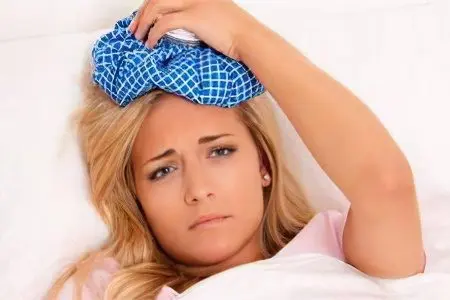
Let’s summarize our conversation about migraine treatment, put together the whole arsenal and draw up a clear plan of action so as not to lose a single precious minute when an attack overtakes you again.
So, if the headache started:
Go home immediately, take time off from work;
Take a warm shower, use aromatic oils that help you cope with pain (lavender, patchouli, bergamot);
Make a cup of sweet tea or coffee, dissolve 2 effervescent aspirin tablets in a glass, eat something light, if you haven’t eaten for a long time, take a Motilium tablet, and if you feel sick, then Cerucala;
Close your room, draw the curtains, lie under the covers, relax and try to sleep;
If after 45-60 minutes the pain has not started to recede, use a temperature contrast: put a cold wet towel on your forehead or under your neck, and lower your legs into a basin of hot water. Ask someone close to give you a massage, or resort to acupressure yourself, the schemes of which are easy to find on the net;
After 2 hours, if the pain is still not relieved, take a triptan or a combination analgesic with a sedative component;
If even after 2 hours after this the attack did not stop, vomiting began, do not take any more pills – call an ambulance or inject Baralgin / Ketorolac at home, if possible.
When to call an ambulance?
There are times when an ambulance needs to be called. Although migraine is not a dangerous disease, in very rare cases it takes on threatening forms and can lead to serious complications. Read the following list carefully: even if you’re used to dealing with seizures on your own, some deviations from the usual scenario should cause you to immediately grab the phone.
Call an ambulance if:
The attack lasts more than three days, that is, you have the so-called “migraine status”, the result of which, especially in adulthood, can be a stroke;
You have repeated vomiting, diarrhea and dehydration;
Migraine aura lasts more than 1 hour;
Violations of vision, speech, touch and smell persist throughout the attack, and not just precede it;
Before, your migraine was never accompanied by an aura, but now it suddenly appeared;
You have severe dizziness, darkening of the eyes, distortion of the outlines of objects, complete blindness, loss of consciousness, disorientation in space;
The course of the migraine has changed dramatically, and in the last week you have had a second or third attack;
You are over 55 years old, have had a migraine for a long time, and suddenly you have a severe migraine-like headache again.
We hope that today we were able to answer all your questions about migraine, help you find hope and suggest ways to bring this insidious and mysterious disease under control. Take care of yourself and be healthy!
[Video] Dr. Evdokimenko – MIGRAINE, severe headache, causes and treatment. How to remove an attack?










məlumat üçün çox sağ olun